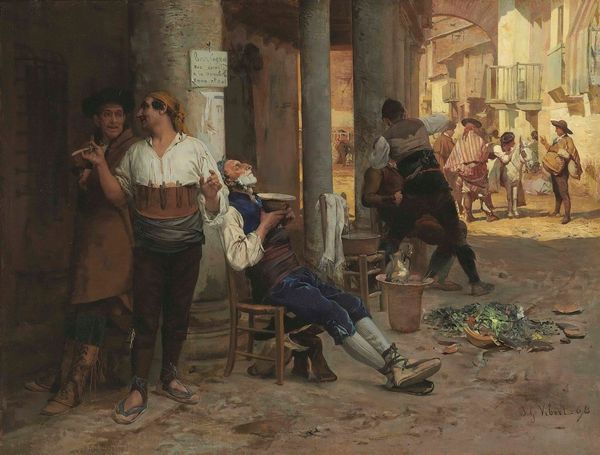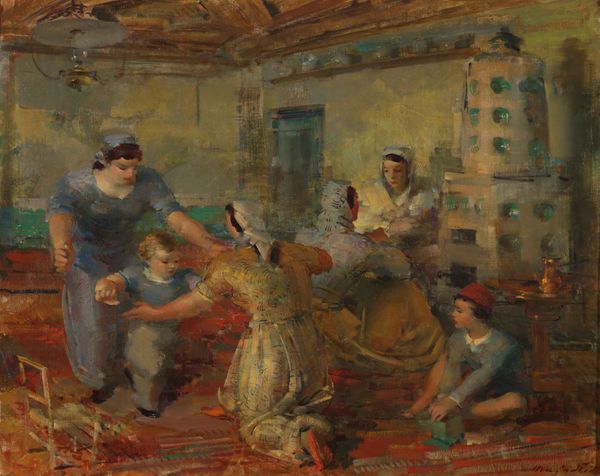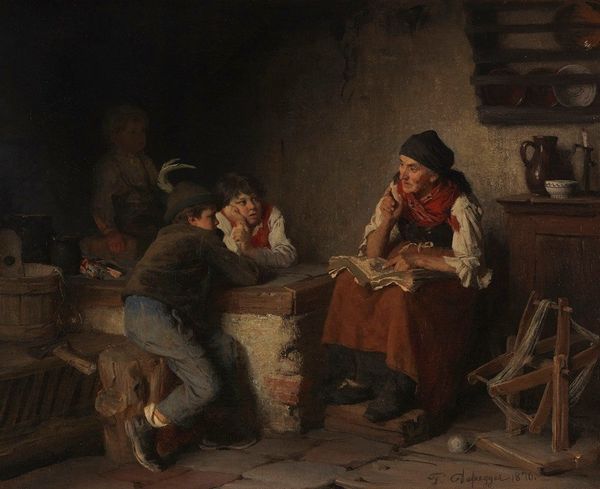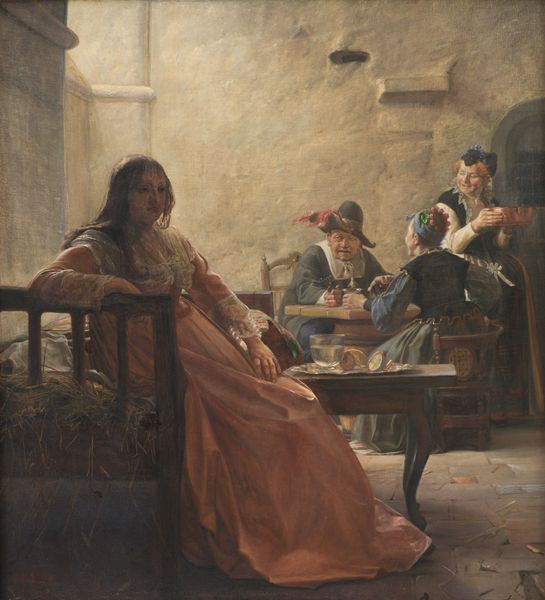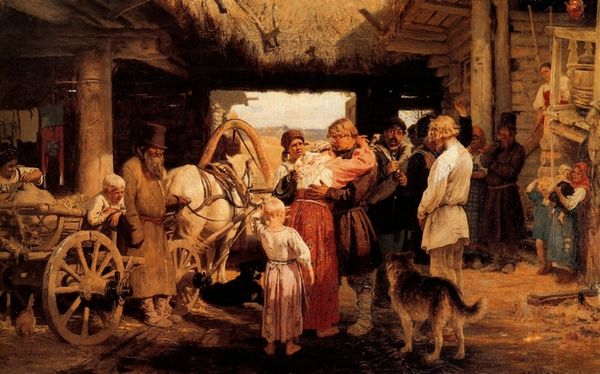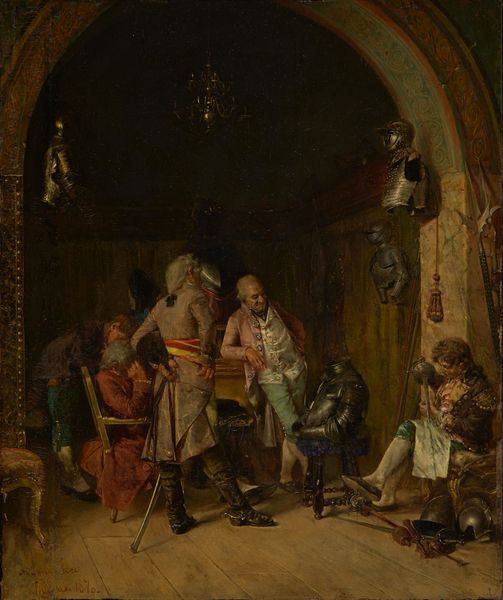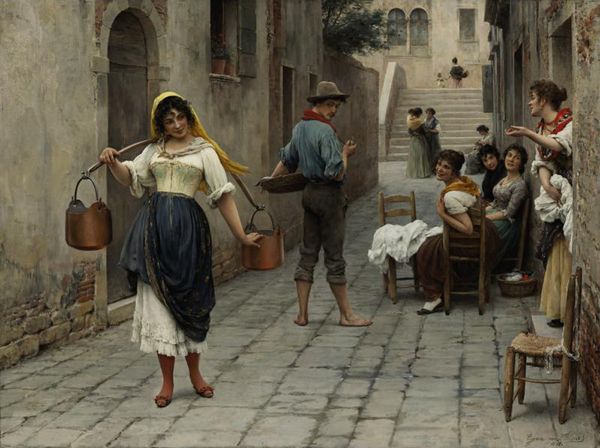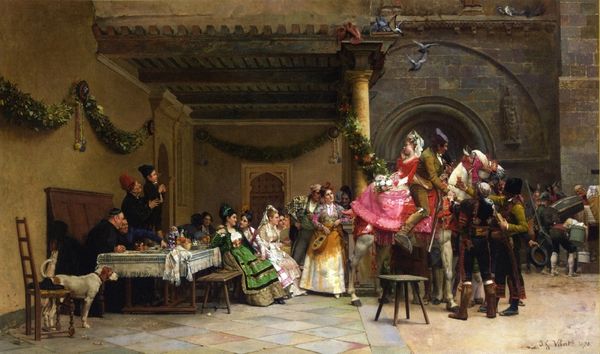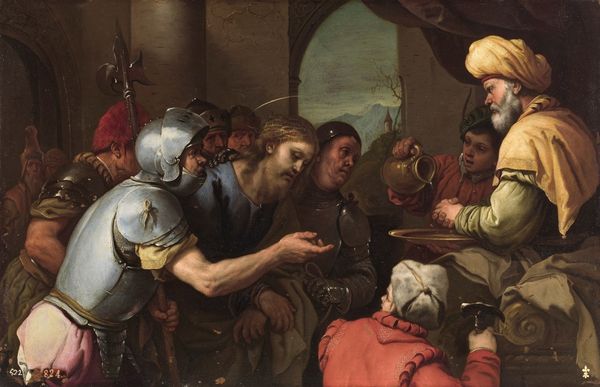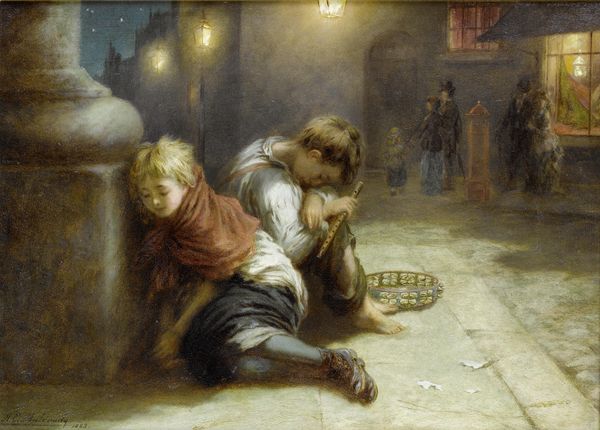
oil-paint
#
oil-paint
#
landscape
#
figuration
#
oil painting
#
cityscape
#
genre-painting
#
italian-renaissance
#
realism
Dimensions: 48.5 x 28.5 cm
Copyright: Public domain
Editor: Here we have "Gelato Vendor," an oil painting of undetermined date by Antonio Paoletti. It has a bustling energy with its figures gathered in a public space. The artist's skilled application of paint really draws the eye. How would you interpret its visual construction? Curator: The composition is undeniably dynamic. Paoletti has structured the canvas using a complex interplay of lines and shapes, directing our gaze from the foreground figures towards the architectural backdrop. Observe how the verticality of the Doge's Palace and the Bridge of Sighs contrasts with the circular motion implied by the vendor's activity and the children gathered around him. It establishes a powerful contrast that speaks to social hierarchies through architecture, while simultaneously revealing community and togetherness around the making of the sweet treat. Editor: It’s interesting how the setting becomes a character in itself! The linear elements you pointed out are something I hadn’t considered. Curator: Exactly. Note also the contrast in texture – the smooth finish on the architectural elements and the roughly-dressed workers and the mottled appearance of the vendor’s equipment and surfaces. How does Paoletti manipulate impasto and glazing techniques to capture light and shadow? What are your thoughts on the significance of this textural counterpoint? Editor: Well, you can clearly see how Paoletti utilizes varied techniques to build a sense of realism, so that even something mundane feels so tangible. I never considered the deeper implications of the various material representations. Curator: Precisely. By decoding Paoletti's use of composition, line, texture, light, and tone, we understand the image’s complexity far beyond a genre scene. The piece’s artistry reveals that a vendor making treats in an Italian city can carry many meanings when represented by such artistry. Editor: This close reading definitely encourages a new way of seeing and interpreting, thinking of paintings as more than just a surface representation. Thanks for sharing these perspectives.
Comments
No comments
Be the first to comment and join the conversation on the ultimate creative platform.
